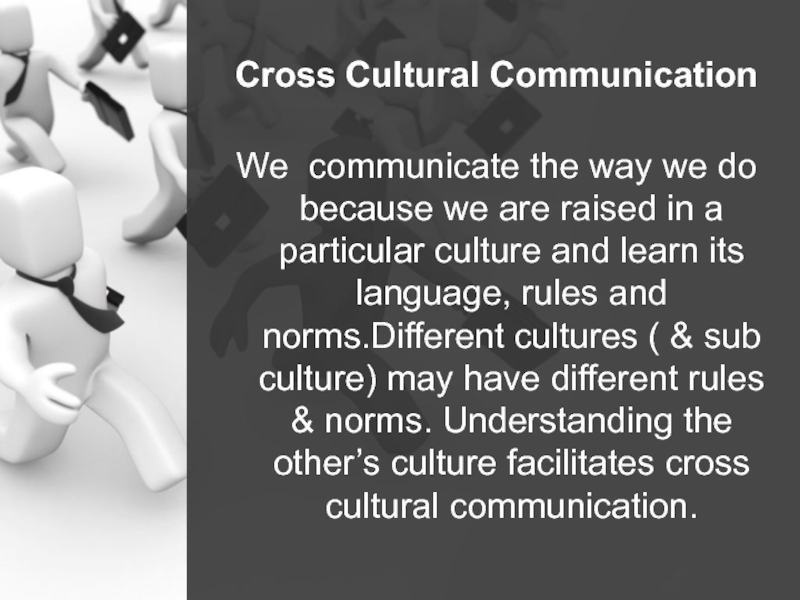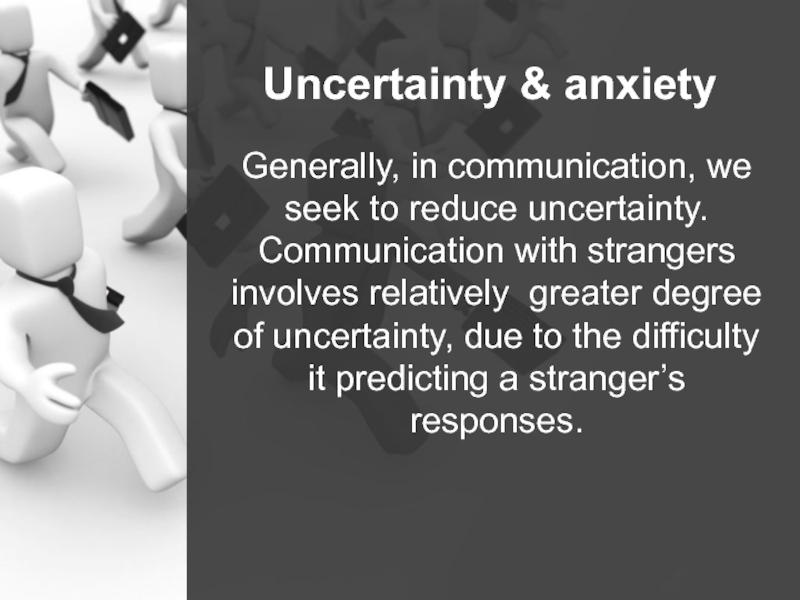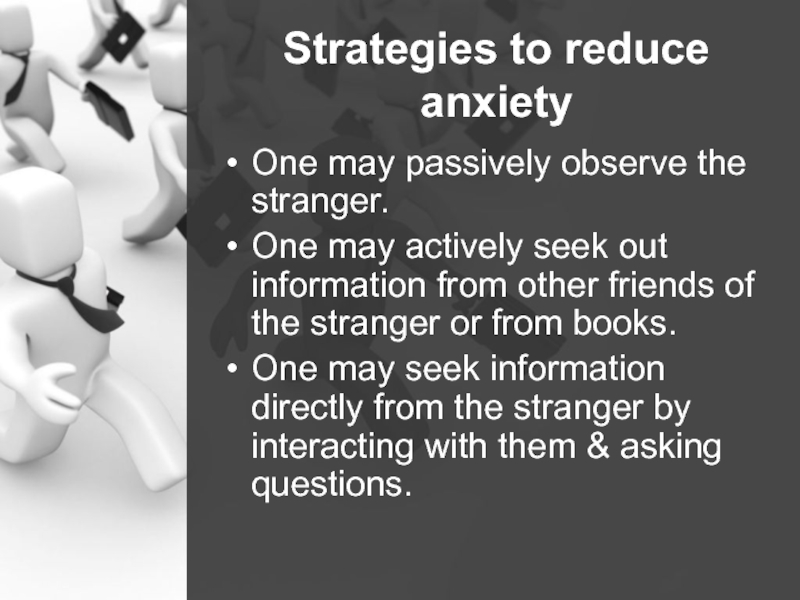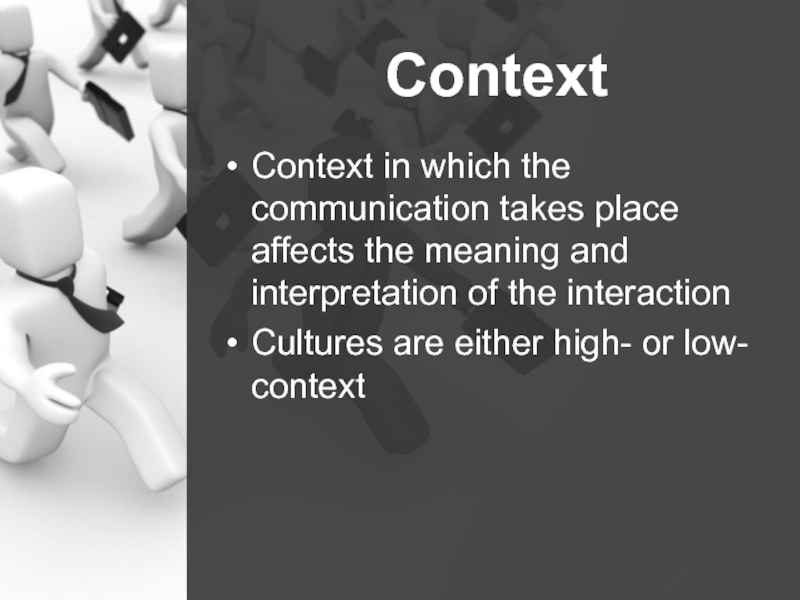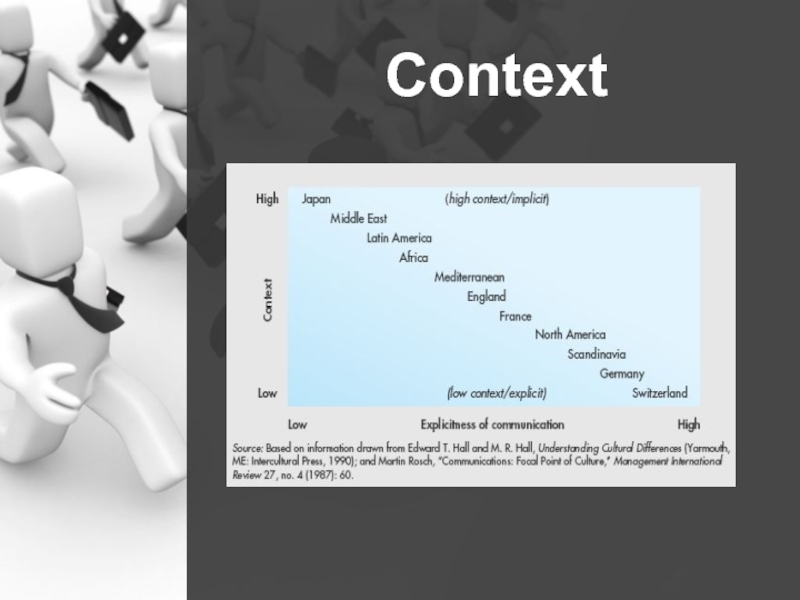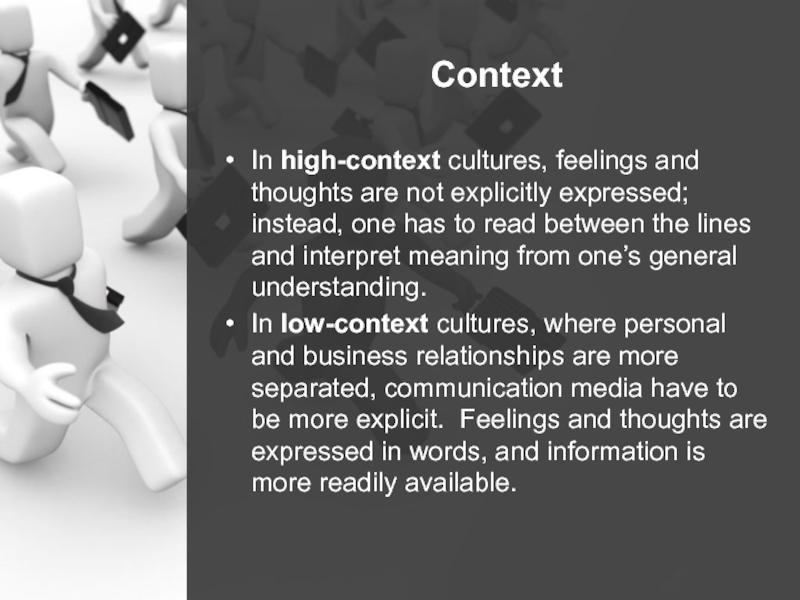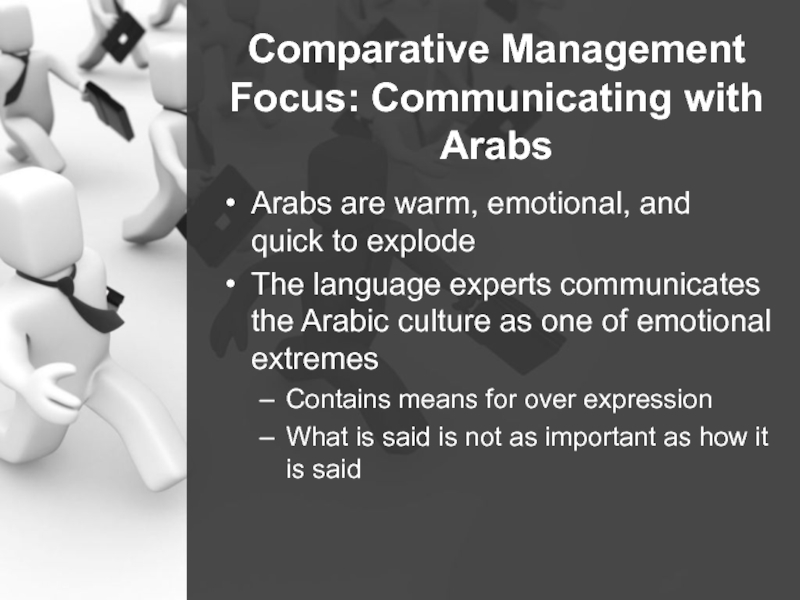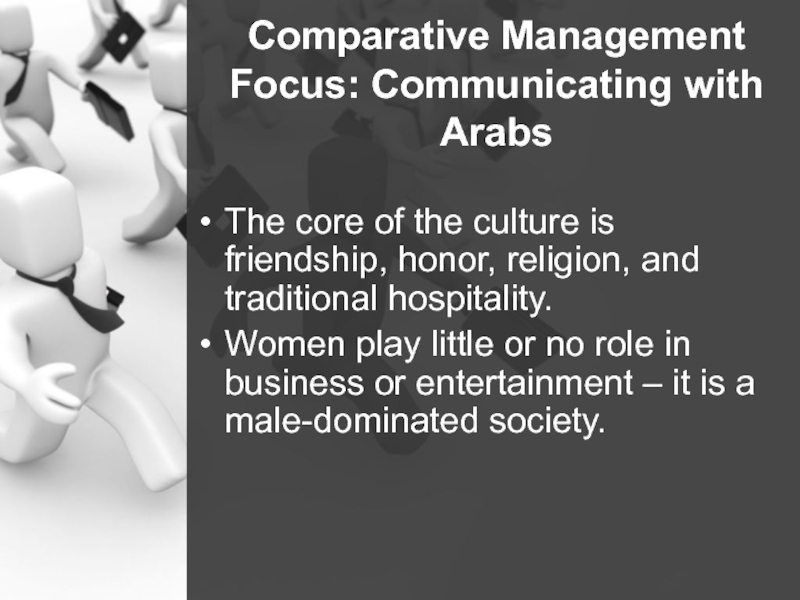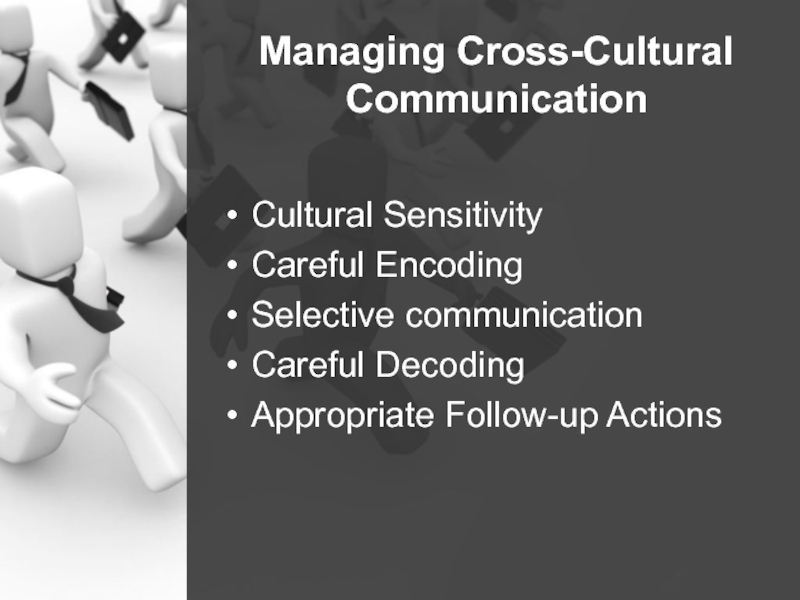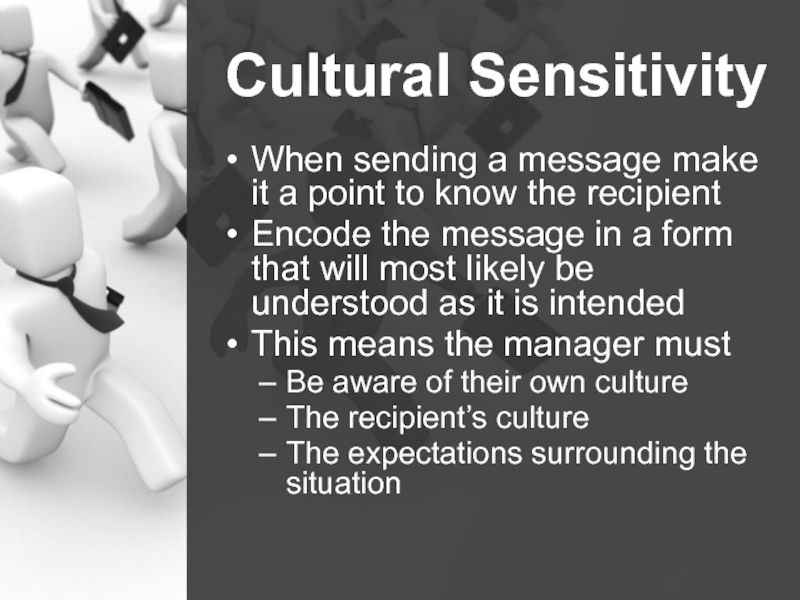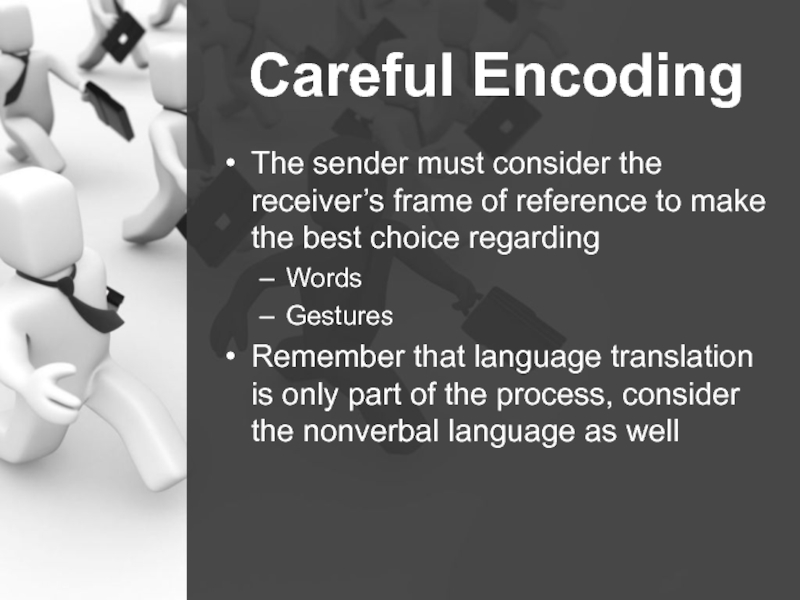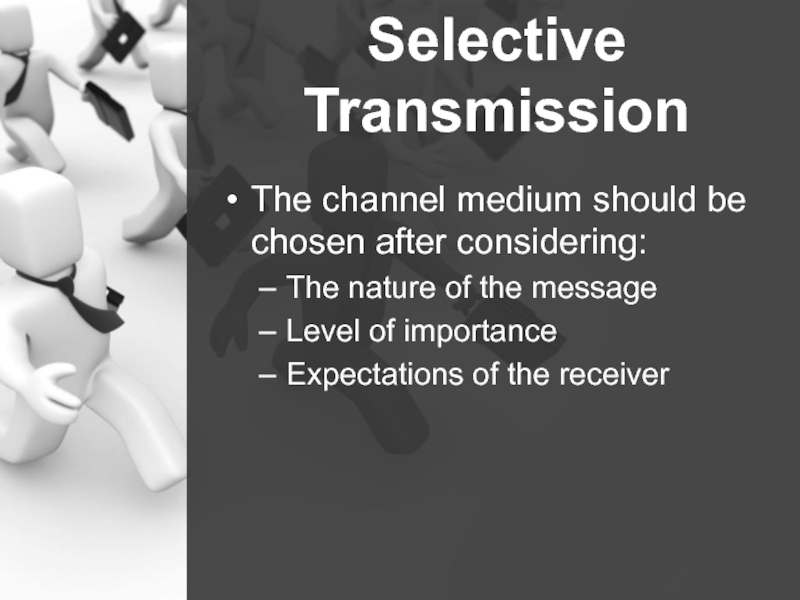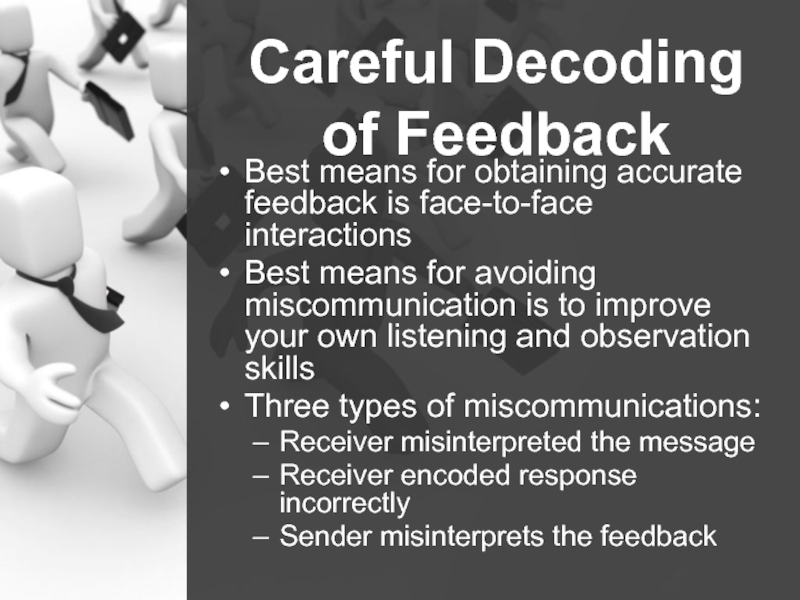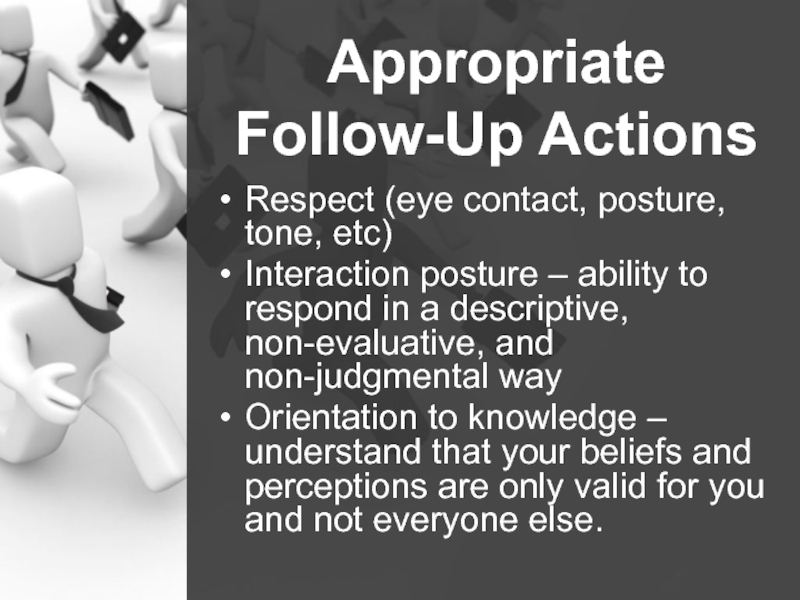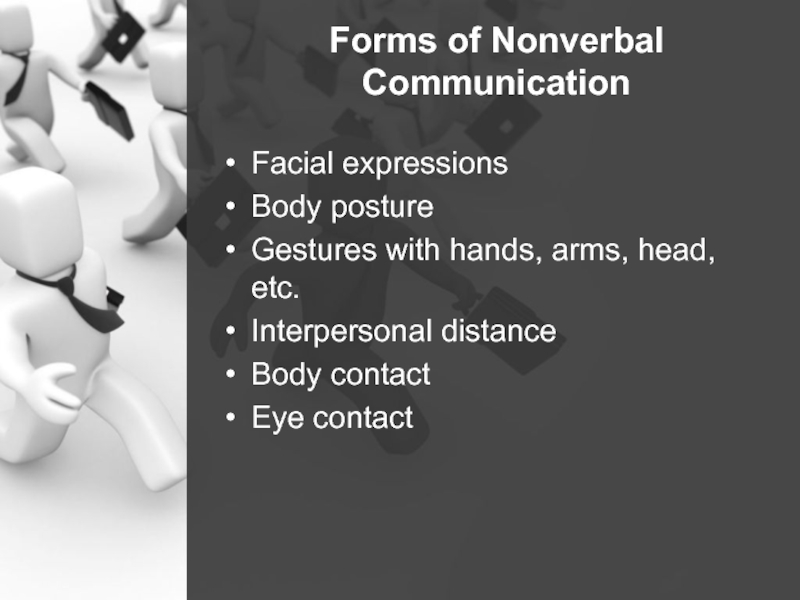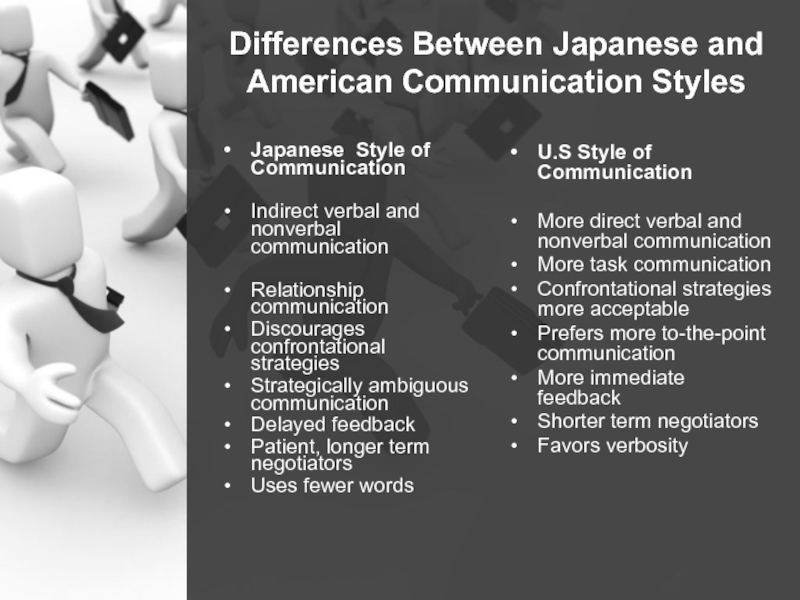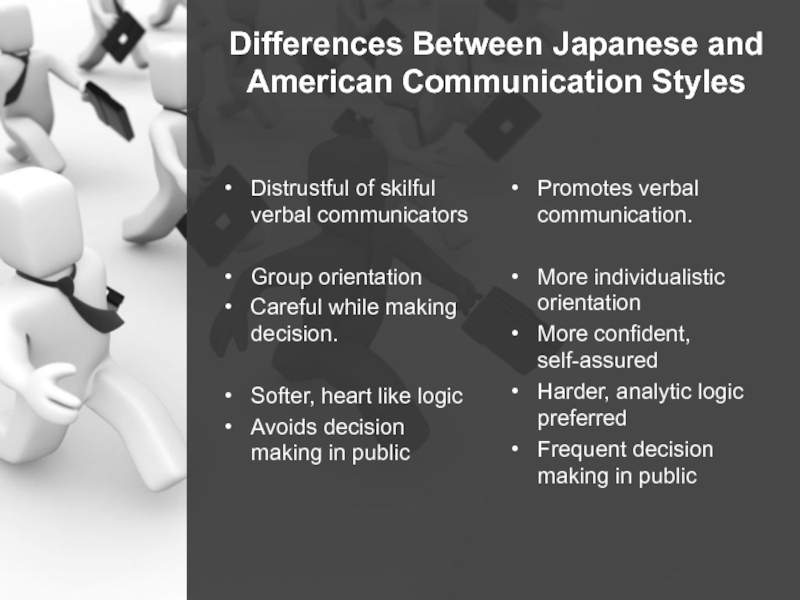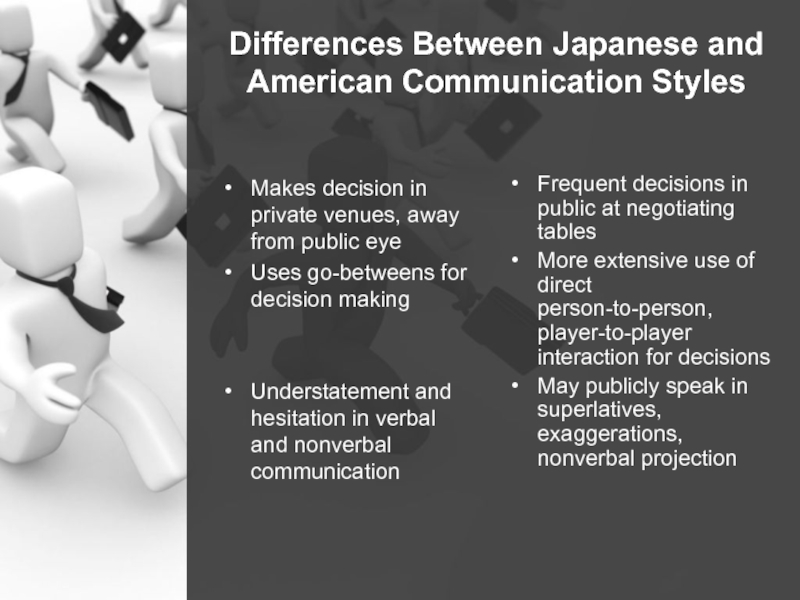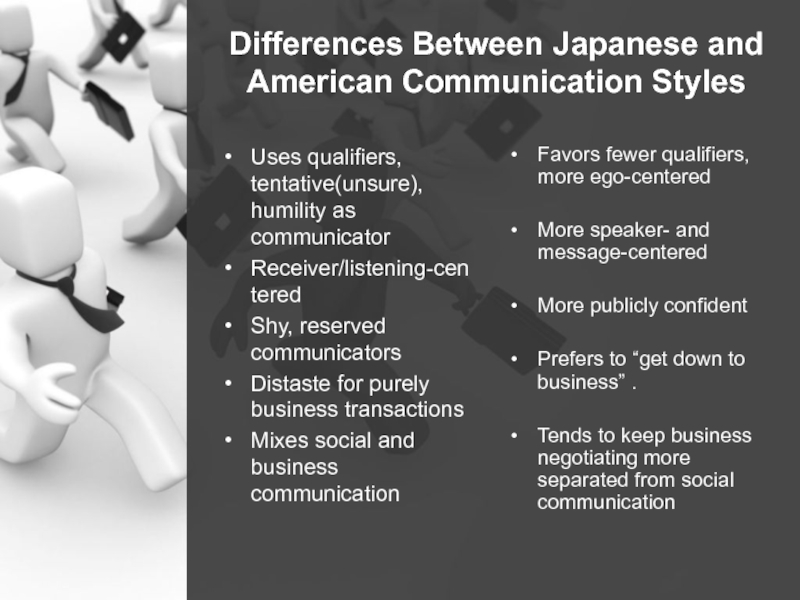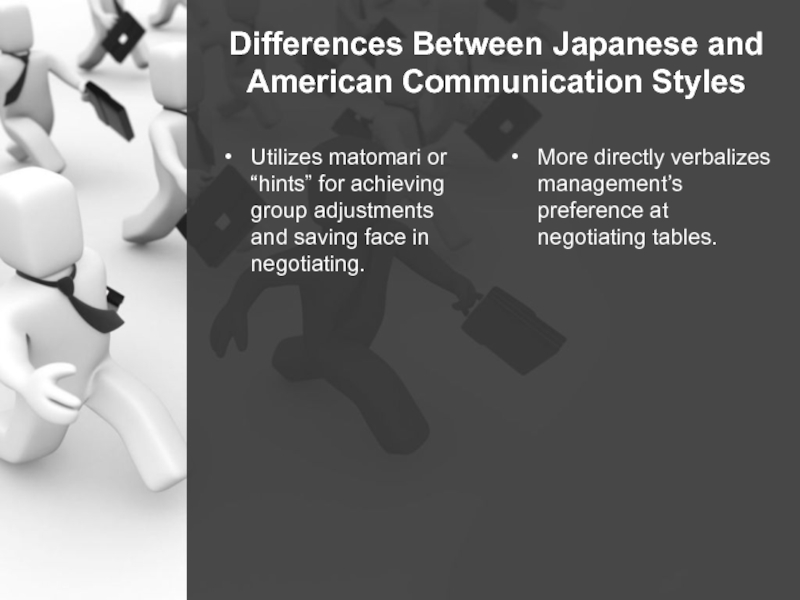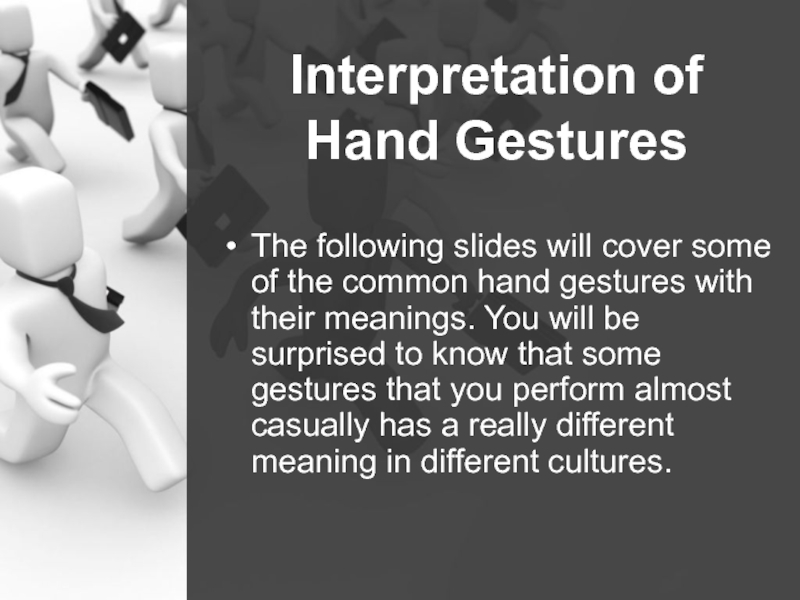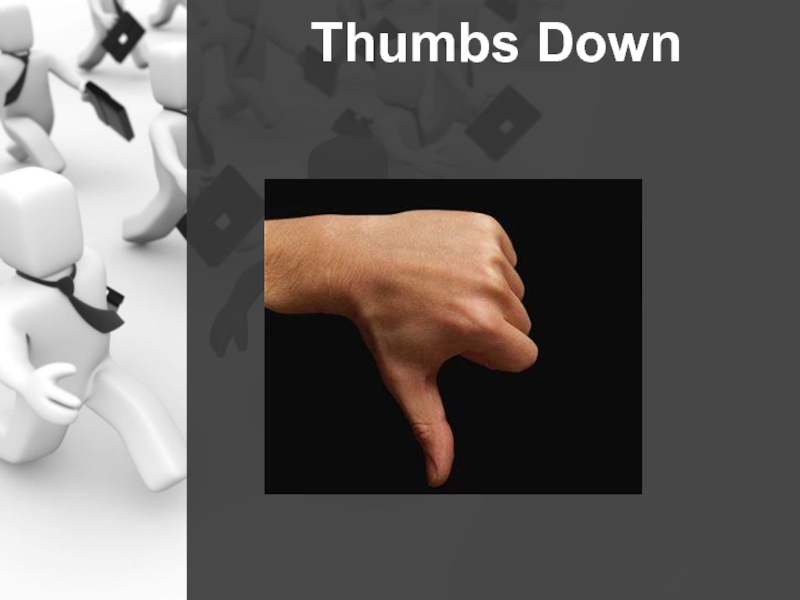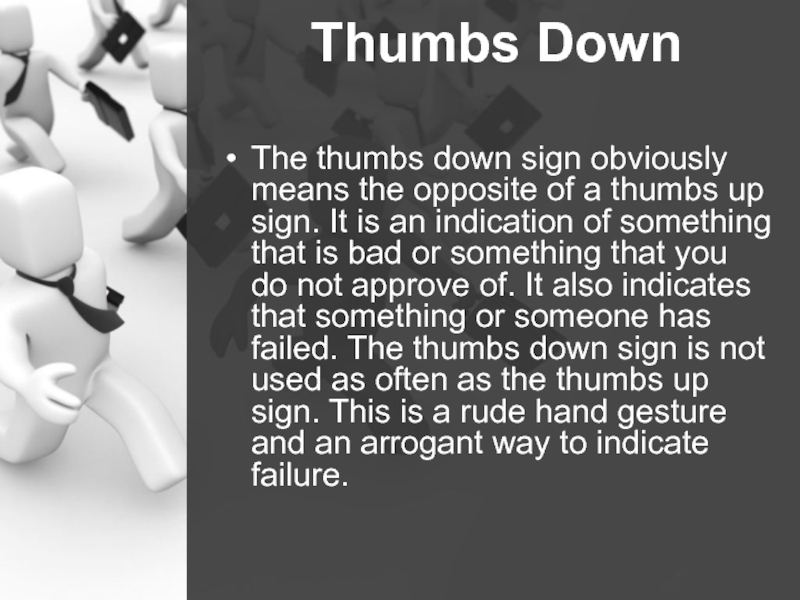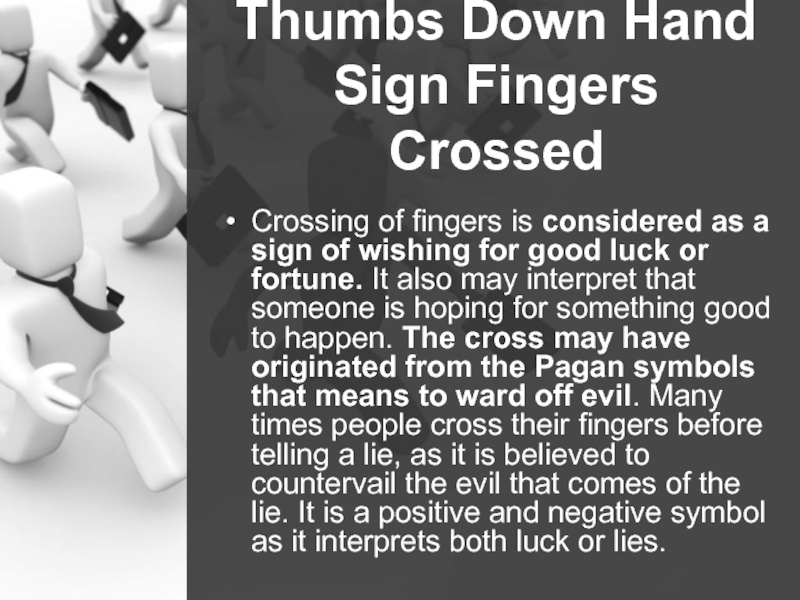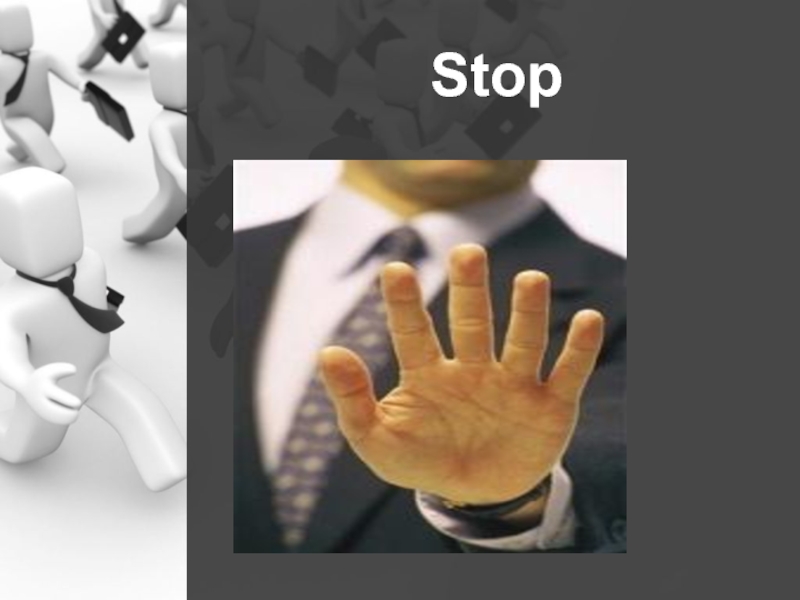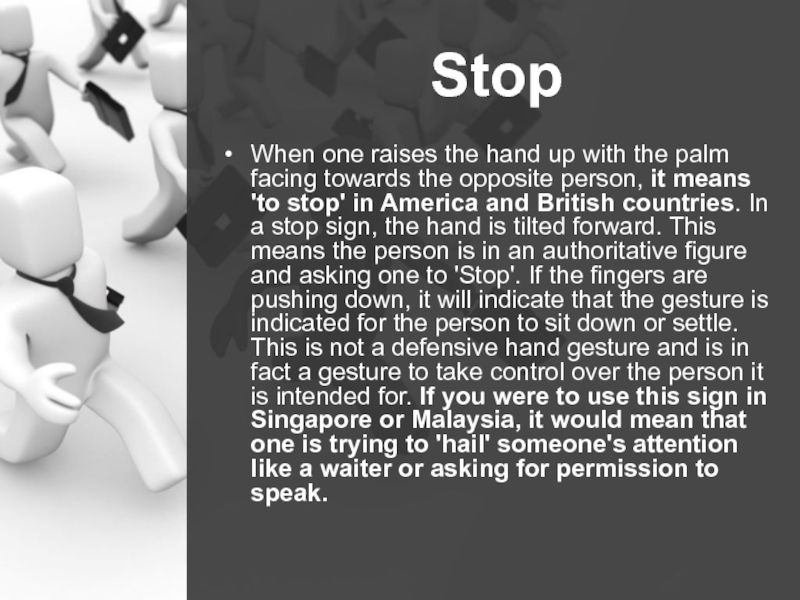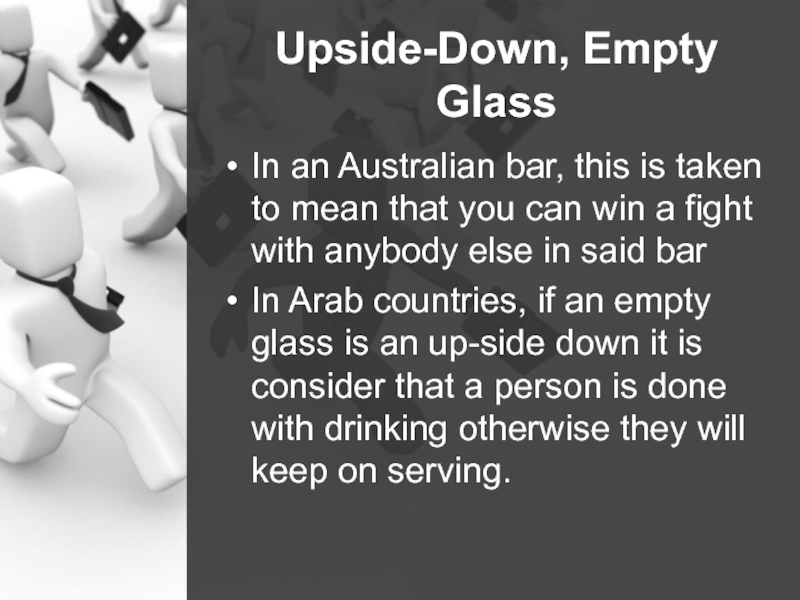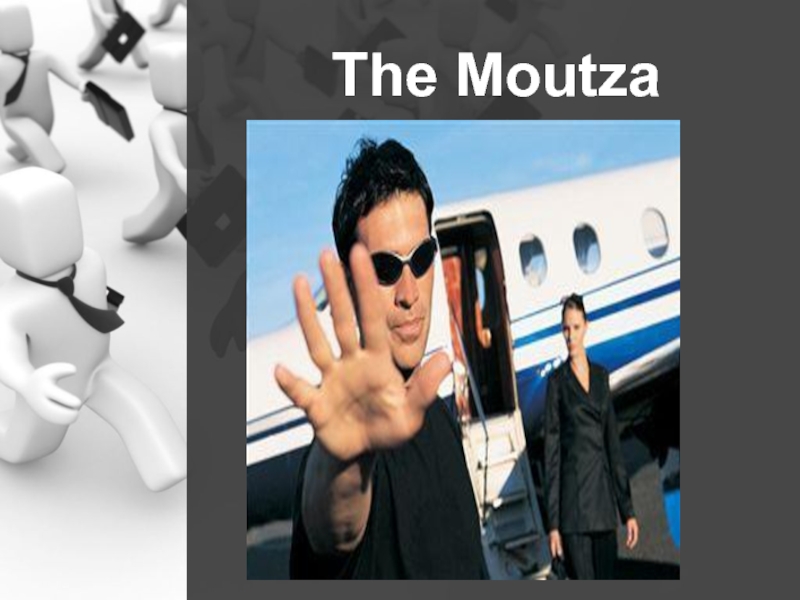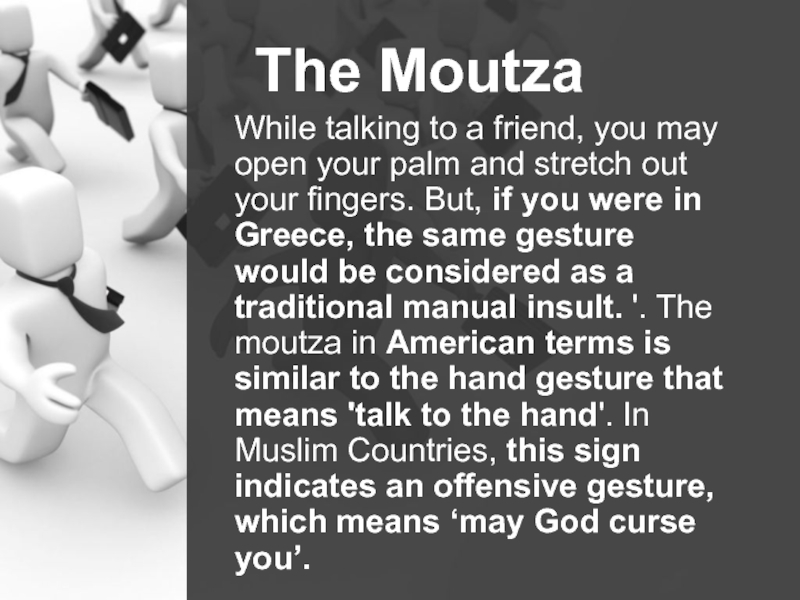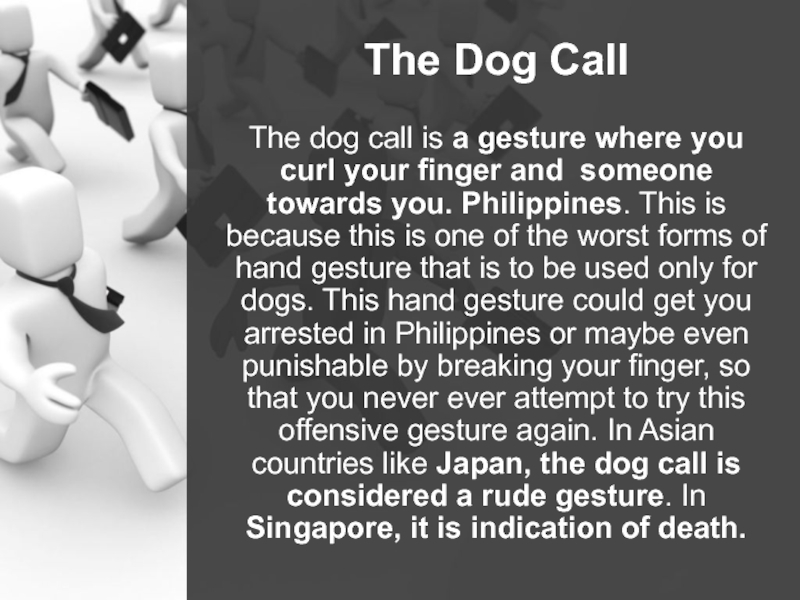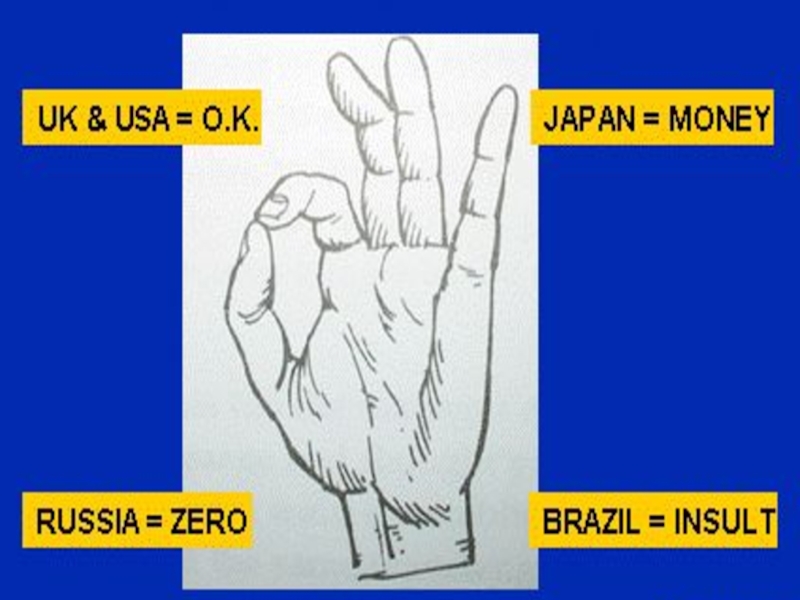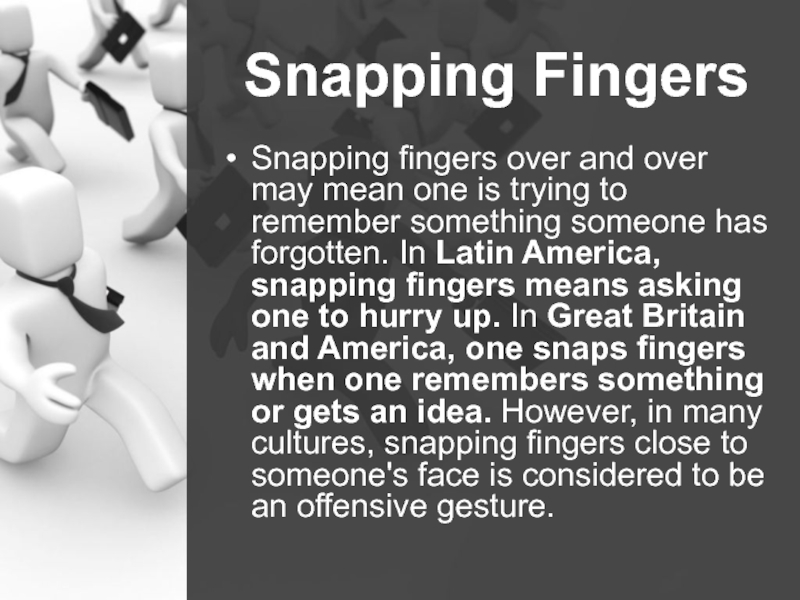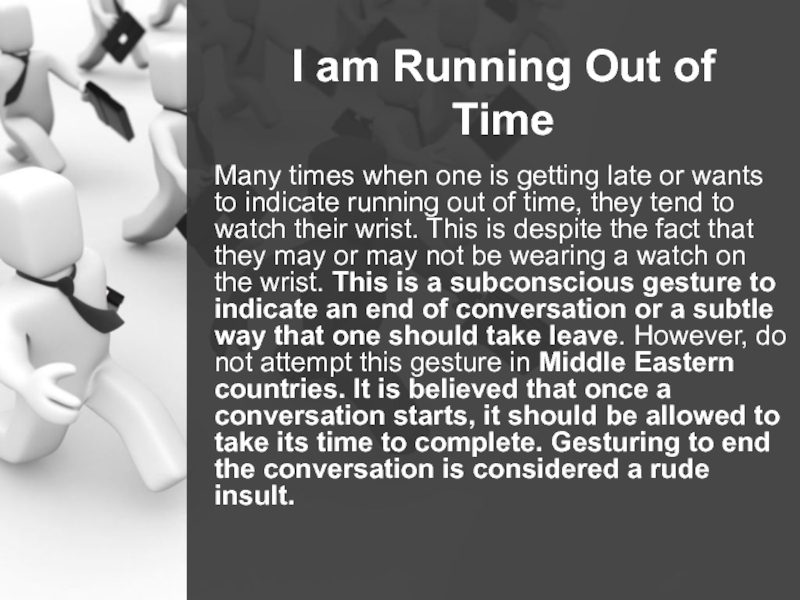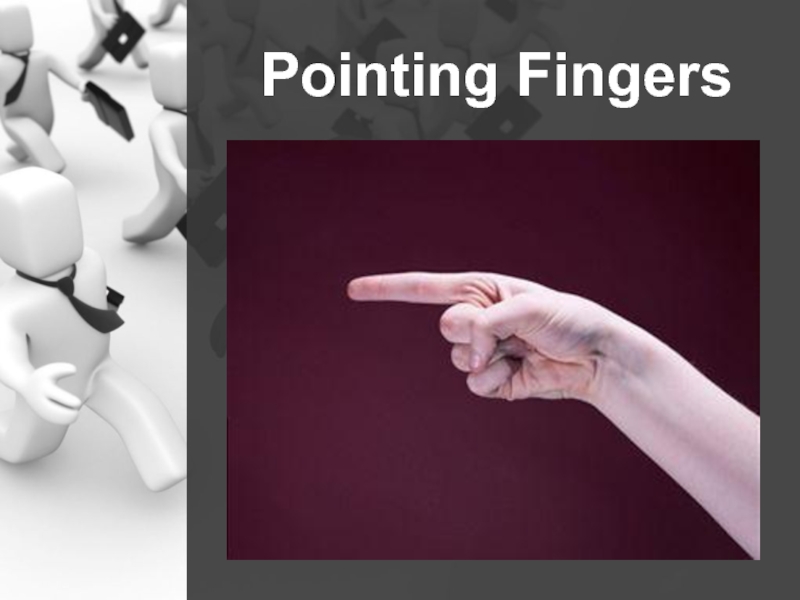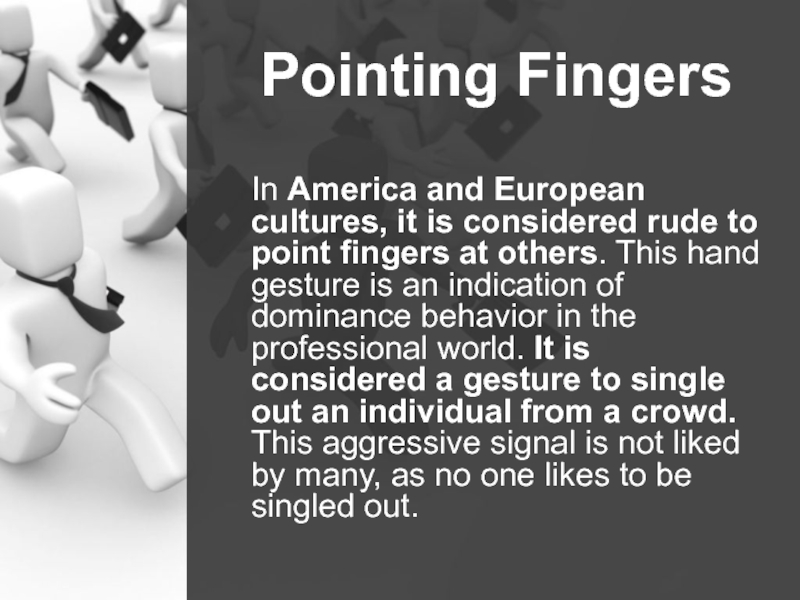- Главная
- Разное
- Дизайн
- Бизнес и предпринимательство
- Аналитика
- Образование
- Развлечения
- Красота и здоровье
- Финансы
- Государство
- Путешествия
- Спорт
- Недвижимость
- Армия
- Графика
- Культурология
- Еда и кулинария
- Лингвистика
- Английский язык
- Астрономия
- Алгебра
- Биология
- География
- Детские презентации
- Информатика
- История
- Литература
- Маркетинг
- Математика
- Медицина
- Менеджмент
- Музыка
- МХК
- Немецкий язык
- ОБЖ
- Обществознание
- Окружающий мир
- Педагогика
- Русский язык
- Технология
- Физика
- Философия
- Химия
- Шаблоны, картинки для презентаций
- Экология
- Экономика
- Юриспруденция
Communication Across Cultures презентация
Содержание
- 1. Communication Across Cultures
- 2. Cross Cultural Communication We communicate the
- 3. Uncertainty & anxiety Generally, in communication, we
- 4. Strategies to reduce anxiety One may passively
- 5. Context Context in which the communication takes
- 6. Context
- 7. Context In high-context cultures, feelings and thoughts
- 8. Comparative Management Focus: Communicating with Arabs Arabs
- 9. Comparative Management Focus: Communicating with Arabs
- 10. Managing Cross-Cultural Communication Cultural Sensitivity Careful Encoding Selective communication Careful Decoding Appropriate Follow-up Actions
- 11. Cultural Sensitivity When sending a message make
- 12. Careful Encoding The sender must consider the
- 13. Selective Transmission The channel medium should be
- 14. Careful Decoding of Feedback Best means for
- 15. Appropriate Follow-Up Actions Respect (eye contact, posture,
- 16. Forms of Nonverbal Communication Facial expressions
- 17. Differences Between Japanese and American Communication Styles
- 18. Differences Between Japanese and American Communication Styles
- 19. Differences Between Japanese and American Communication Styles
- 20. Differences Between Japanese and American Communication Styles
- 21. Differences Between Japanese and American Communication Styles
- 22. Interpretation of Hand Gestures
- 23. Thumbs Up
- 24. Thumbs Up The thumbs up sign
- 25. Thumbs Down
- 26. Thumbs Down The thumbs down sign
- 27. Thumbs Down Hand Sign Fingers Crossed
- 28. Thumbs Down Hand Sign Fingers Crossed
- 29. Stop
- 30. Stop When one raises the hand up
- 31. Upside-Down, Empty Glass In an Australian bar,
- 32. The Moutza
- 33. The Moutza While talking to a friend,
- 34. The Dog Call The Dog Call
- 35. The Dog Call The dog call
- 36. O.K
- 37. Gestures CONCLUSION
- 38. Fingers Snap
- 39. Snapping Fingers Snapping fingers over and over
- 40. I am Running Out of Time
- 41. I am Running Out of Time Many
- 42. Pointing Fingers
- 43. Pointing Fingers In America and European
Слайд 1Communication Across Cultures
Group Members:
Farah Ahmed
Sahrish Darjat
Umaima Siddiqui
Urooj Sheikh
Слайд 2Cross Cultural Communication
We communicate the way we do because we
Слайд 3Uncertainty & anxiety
Generally, in communication, we seek to reduce uncertainty. Communication
Слайд 4Strategies to reduce anxiety
One may passively observe the stranger.
One may actively
One may seek information directly from the stranger by interacting with them & asking questions.
Слайд 5Context
Context in which the communication takes place affects the meaning and
Cultures are either high- or low- context
Слайд 7Context
In high-context cultures, feelings and thoughts are not explicitly expressed; instead,
In low-context cultures, where personal and business relationships are more separated, communication media have to be more explicit. Feelings and thoughts are expressed in words, and information is more readily available.
Слайд 8Comparative Management Focus: Communicating with Arabs
Arabs are warm, emotional, and quick
The language experts communicates the Arabic culture as one of emotional extremes
Contains means for over expression
What is said is not as important as how it is said
Слайд 9Comparative Management Focus: Communicating with Arabs
The core of the culture is
Women play little or no role in business or entertainment – it is a male-dominated society.
Слайд 10Managing Cross-Cultural Communication
Cultural Sensitivity
Careful Encoding
Selective communication
Careful Decoding
Appropriate Follow-up Actions
Слайд 11Cultural Sensitivity
When sending a message make it a point to know
Encode the message in a form that will most likely be understood as it is intended
This means the manager must
Be aware of their own culture
The recipient’s culture
The expectations surrounding the situation
Слайд 12Careful Encoding
The sender must consider the receiver’s frame of reference to
Words
Gestures
Remember that language translation is only part of the process, consider the nonverbal language as well
Слайд 13Selective Transmission
The channel medium should be chosen after considering:
The nature of
Level of importance
Expectations of the receiver
Слайд 14Careful Decoding of Feedback
Best means for obtaining accurate feedback is face-to-face
Best means for avoiding miscommunication is to improve your own listening and observation skills
Three types of miscommunications:
Receiver misinterpreted the message
Receiver encoded response incorrectly
Sender misinterprets the feedback
Слайд 15Appropriate Follow-Up Actions
Respect (eye contact, posture, tone, etc)
Interaction posture – ability
Orientation to knowledge – understand that your beliefs and perceptions are only valid for you and not everyone else.
Слайд 16Forms of Nonverbal Communication
Facial expressions
Body posture
Gestures with hands, arms, head, etc.
Interpersonal
Body contact
Eye contact
Слайд 17Differences Between Japanese and American Communication Styles
Japanese Style of Communication
Indirect verbal
Relationship communication
Discourages confrontational strategies
Strategically ambiguous communication
Delayed feedback
Patient, longer term negotiators
Uses fewer words
U.S Style of Communication
More direct verbal and nonverbal communication
More task communication
Confrontational strategies more acceptable
Prefers more to-the-point communication
More immediate feedback
Shorter term negotiators
Favors verbosity
Слайд 18Differences Between Japanese and American Communication Styles
Distrustful of skilful verbal communicators
Group
Careful while making decision.
Softer, heart like logic
Avoids decision making in public
Promotes verbal communication.
More individualistic orientation
More confident, self-assured
Harder, analytic logic preferred
Frequent decision making in public
Слайд 19Differences Between Japanese and American Communication Styles
Makes decision in private venues,
Uses go-betweens for decision making
Understatement and hesitation in verbal and nonverbal communication
Frequent decisions in public at negotiating tables
More extensive use of direct person-to-person, player-to-player interaction for decisions
May publicly speak in superlatives, exaggerations, nonverbal projection
Слайд 20Differences Between Japanese and American Communication Styles
Uses qualifiers, tentative(unsure), humility as
Receiver/listening-centered
Shy, reserved communicators
Distaste for purely business transactions
Mixes social and business communication
Favors fewer qualifiers, more ego-centered
More speaker- and message-centered
More publicly confident
Prefers to “get down to business” .
Tends to keep business negotiating more separated from social communication
Слайд 21Differences Between Japanese and American Communication Styles
Utilizes matomari or “hints” for
More directly verbalizes management’s preference at negotiating tables.
Слайд 22
Interpretation of Hand Gestures
The following slides will cover some of the
Слайд 24Thumbs Up
The thumbs up sign in most American and European cultures
Слайд 26Thumbs Down
The thumbs down sign obviously means the opposite of a
Слайд 28Thumbs Down Hand Sign Fingers Crossed
Crossing of fingers is considered as
Слайд 30Stop
When one raises the hand up with the palm facing towards
Слайд 31Upside-Down, Empty Glass
In an Australian bar, this is taken to mean
In Arab countries, if an empty glass is an up-side down it is consider that a person is done with drinking otherwise they will keep on serving.

